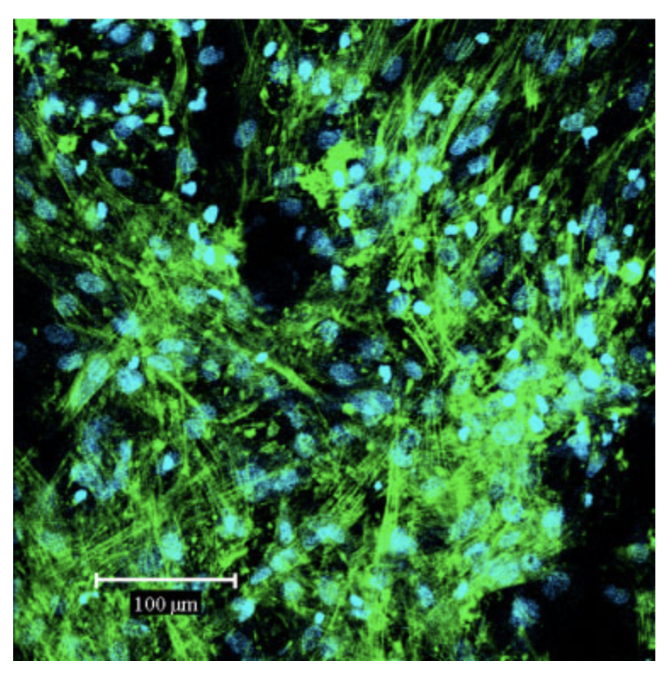Porous mineralized scaffolds are required for various applications in bone engineering. In particular, tube-like pores with controlled orientation inside the scaffold may support homogeneous cell seeding as well as sufficient nutrient supply and may facilitate blood vessel ingrowth. Scaffolds with parallely orientated tube-like pores were generated by diffusion-controlled ionotropic gelation of alginate. Incorporation of hydroxyapatite (HA) during the gelation process yielded stable scaffolds with an average pore diameter of approximately 90m. To evaluate the potential use of alginate-gelatine-HA scaffolds for bone tissue engineering, in vitro tests with human bone marrow stromal cells (hBMSCs) were carried out. We analysed biocompatibility and cell penetration into the capillary pores by microscopic methods. hBMSCs were also cultivated on alginate-gelatine-HA scaffolds for 3 weeks in the presence and absence of osteogenic supplements. We studied proliferation and osteogenic differentiation in terms of total lactate dehydrogenase (LDH) activity, DNA content and alkaline phosphatase (ALP) activity and found a 10-14-fold increase of cell number after 2 weeks of cultivation, as well as an increase of specific ALP activity for osteogenic-induced hBMSCs. Furthermore, the expression of bone-related genes [ALP, bone sialoprotein II (BSPII)] was analysed. We found an increase of ALP as well as BSPII expression for osteogenic-induced hBMSCs on alginate-gelatin-HA scaffolds.

Porous mineralized scaffolds are required for various applications in bone engineering. In particular, tube-like pores with controlled orientation inside the scaffold may support homogeneous cell seeding as well as sufficient nutrient supply and may facilitate blood vessel ingrowth. Scaffolds with parallely orientated tube-like pores were generated by diffusion-controlled ionotropic gelation of alginate. Incorporation of hydroxyapatite (HA) during the gelation process yielded stable scaffolds with an average pore diameter of approximately 90m. To evaluate the potential use of alginate-gelatine-HA scaffolds for bone tissue engineering, in vitro tests with human bone marrow stromal cells (hBMSCs) were carried out. We analysed biocompatibility and cell penetration into the capillary pores by microscopic methods. hBMSCs were also cultivated on alginate-gelatine-HA scaffolds for 3 weeks in the presence and absence of osteogenic supplements. We studied proliferation and osteogenic differentiation in terms of total lactate dehydrogenase (LDH) activity, DNA content and alkaline phosphatase (ALP) activity and found a 10-14-fold increase of cell number after 2 weeks of cultivation, as well as an increase of specific ALP activity for osteogenic-induced hBMSCs. Furthermore, the expression of bone-related genes [ALP, bone sialoprotein II (BSPII)] was analysed. We found an increase of ALP as well as BSPII expression for osteogenic-induced hBMSCs on alginate-gelatin-HA scaffolds.
